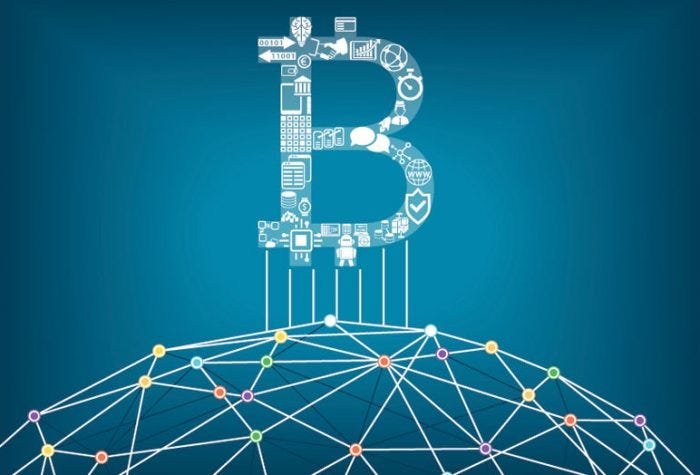Blockchain technology has rapidly evolved into one of the most groundbreaking innovations of the 21st century. At its essence, blockchain is a type of distributed ledger technology (DLT) that enables secure, transparent, and immutable record-keeping across a decentralized network. It eliminates the need for central authorities, instead relying on a peer-to-peer system where cryptographic consensus algorithms maintain data integrity.
The public first encountered blockchain through Bitcoin, a digital currency introduced in 2009 by the enigmatic Satoshi Nakamoto. While Bitcoin demonstrated blockchain’s capacity for enabling decentralized money transfer, it was only the beginning. Today, blockchain is the foundation for a wide range of digital ecosystems including decentralized finance (DeFi), non-fungible tokens (NFTs), and Web3 platforms.
How Blockchain Works
At a technical level, a blockchain is composed of blocks that store data. Each block contains a list of transactions, a timestamp, a cryptographic hash of the previous block, and a unique identifier. These blocks are linked together in chronological order, forming a chain. Because each block references the one before it, altering past data would require redoing all subsequent blocks, which is nearly impossible due to the computational effort required.
A network of computers enables the decentralized nature of blockchain—referred to as nodes—that maintain a shared ledger. Consensus mechanisms such as Proof of Work (PoW), Proof of Stake (PoS), and newer models like Delegated Proof of Stake (DPoS) ensure that transactions are validated fairly and securely. This decentralized validation process is what makes blockchain tamper-resistant and trustworthy.
Blockchain Beyond Bitcoin

Although blockchain technology was first popularized through Bitcoin, its utility extends far beyond cryptocurrency. Ethereum, developed by Vitalik Buterin in 2015, introduced the concept of smart contracts—self-executing code that automatically enforces agreements between parties. This innovation gave rise to decentralized applications (dApps) and made Ethereum the backbone of modern DeFi platforms like Aave, Compound, and MakerDAO.
In the enterprise world, companies such as IBM and Microsoft have developed private blockchain solutions for business use. Supply chains benefit from blockchain’s ability to track goods from origin to destination with verifiable accuracy. For instance, Walmart uses blockchain to monitor food safety by tracking produce from farms to stores in real time, improving traceability and accountability.
Applications Across Industries
Blockchain is disrupting multiple industries by offering innovative solutions to persistent challenges. In healthcare, it enables secure patient data sharing across institutions while preserving privacy and compliance with regulations like HIPAA. Startups like Medicalchain and BurstIQ are pioneering this application.
The real estate industry leverages blockchain for transparent property transactions, reducing fraud and streamlining processes. Smart contracts can automatically transfer ownership upon payment confirmation, minimizing reliance on traditional intermediaries.
In voting systems, blockchain promises greater transparency and security. By recording each vote as a blockchain transaction, the system becomes auditable and tamper-proof, helping to restore public trust in democratic processes. Pilot programs in countries like Estonia and Switzerland are already testing this use case.
The digital identity sector is also being transformed. Through decentralized identity solutions, users can control and verify their credentials without relying on centralized authorities. Projects like Sovrin and the World Economic Forum’s Known Traveller Digital Identity aim to simplify cross-border identity verification.
Blockchain and Emerging Technologies

Blockchain’s integration with other emerging technologies is fueling unprecedented innovation. In combination with Artificial Intelligence (AI), blockchain provides reliable and auditable data sources, which are crucial for training AI algorithms. This synergy is beneficial in industries where data accuracy is critical, such as finance and healthcare.
With the Internet of Things (IoT), blockchain ensures the secure and verifiable exchange of data between devices. Companies like Filament and IOTA are pioneering blockchain-based IoT solutions that enhance the reliability of smart infrastructure, from connected homes to industrial automation.
Blockchain also plays a key role in the evolution of the metaverse. Platforms like Decentraland and The Sandbox allow users to buy, sell, and build on virtual land using blockchain-based tokens. NFTs serve as unique digital representations of ownership, powering new forms of digital interaction and commerce.
Challenges and Criticisms
Despite its promise, blockchain is not without its challenges. Scalability remains a significant concern, especially for public blockchains that struggle to process large volumes of transactions quickly. Solutions such as sharding, Layer 2 protocols like Optimism and Arbitrum, and sidechains like Polygon are being developed to address this issue.
Energy consumption is another contentious issue, particularly for PoW-based systems like Bitcoin. Mining requires significant computational resources, leading to criticism from environmental groups. However, Ethereum’s transition to PoS has shown that greener alternatives are viable, significantly reducing energy usage.
Regulatory uncertainty is also a barrier to adoption. While countries like Singapore and Switzerland have embraced blockchain-friendly regulations, others have imposed restrictions or bans. The lack of global standards makes it difficult for blockchain projects to scale internationally. Governments and regulatory bodies, including the SEC and the European Union, are actively working on frameworks to govern digital assets and blockchain use cases.
Final thoughts
The future of blockchain technology is filled with potential and disruption. One of the most promising developments is interoperability—the ability for different blockchains to communicate and share data. Projects like Cosmos, Polkadot, and Chainlink are focused on creating cross-chain ecosystems that will unlock even greater functionality and collaboration across platforms.
Central Bank Digital Currencies (CBDCs) are another key trend. Countries like China (with the Digital Yuan) and Nigeria (with the eNaira) are actively piloting blockchain-based digital currencies, signaling institutional acceptance of the technology. These digital fiat currencies promise more efficient payment systems and enhanced monetary control.
Decentralized Autonomous Organizations (DAOs) represent a new governance model that uses smart contracts to facilitate collective decision-making without centralized leadership. DAOs are already managing everything from investment funds to creative projects and are seen as the organizational structures of the future.
















